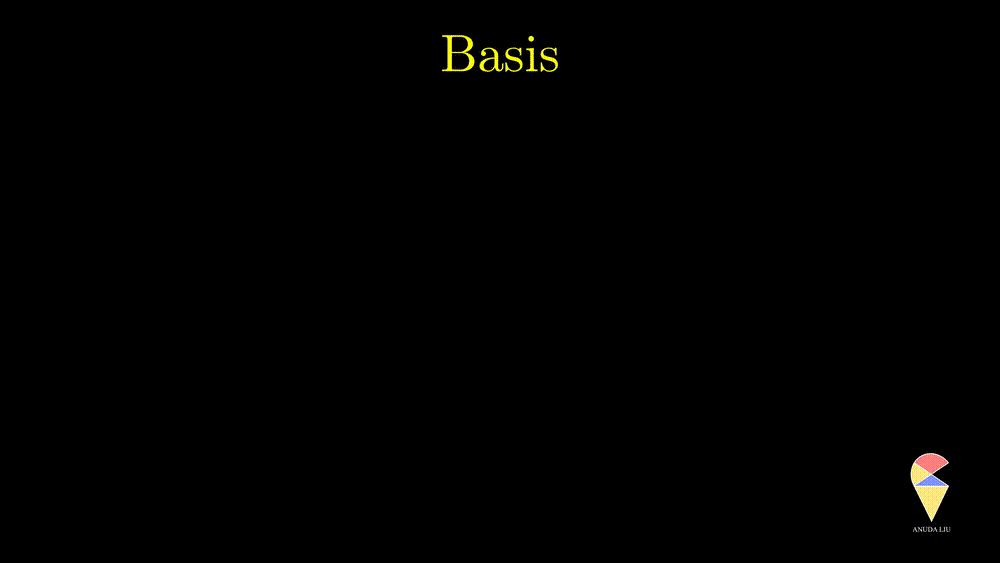Basis
Before, we emphasized a keyword, ‘create’, and say an arbitrary vector can be created by two non-overlapping vectors in 2D space. Now, I want to replace this keyword with ‘represented’, maybe a more formal one. With this new keyword, we move our attention from “resulting vector” to “the two original linearly independent vectors”. We call them a set of basis in the sense that they are the backbone of the space constituted by all possible vectors.

Let’s summarize. In a 2D space, a pair of non-overlapped vectors can be a basis. So the angle between the two vectors is very essential. Then how do we deal with angles in linear algebra? Another question is can we find a better basis in the sense that the coefficients of linear combination can be easily obtained? These questions lead to the next important operation, the inner product.

